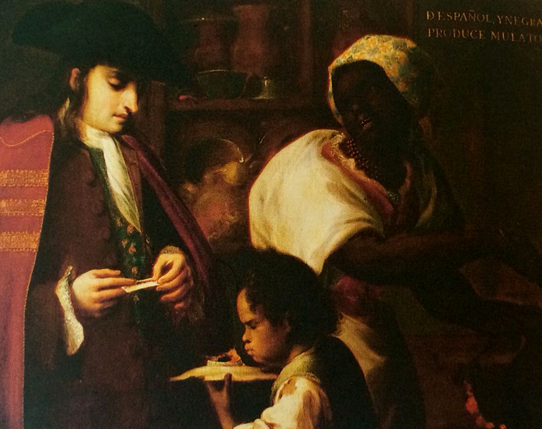2. De Español Y Negra Produce Mulato
After a Series of casta Paintings By Juan Rodríguez Juárez, C. 1715
Still, the centuries have not dulled
the sullenness of the child’s expression.
If there is light inside him, it does not shine
through the paint that holds his face
in profile—his domed forehead, eyes
nearly closed beneath a heavy brow.
Though inside, the boy’s father stands
in his cloak and hat. It’s as if he’s just come in,
or that he’s leaving. We see him
transient, rolling a cigarette, myopic—
his eyelids drawn against the child
passing before him. At the stove,
the boy’s mother contorts, watchful,
her neck twisting on its spine, red beads
yoked at her throat like a necklace of blood,
her face so black she nearly disappears
into the canvas, the dark wall upon which
we see the words that name them.
What should we make of any of this?
Remove the words above their heads,
put something else in place of the child—
a table, perhaps, upon which the man might set
his hat, or a dog upon which to bestow
the blessing of his touch—and the story
changes. The boy is a palimpsest of paint—
layers of color, history rendering him
that precise shade of in-between.
Before this he was nothing: blank
canvas—before image or word, before
a last brush stroke fixed him in his place.
